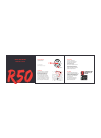W
hen the Crest Audio HP-8 Mixing
Console was first announced at
Winter NAMM 2004, it sparked a
great deal of anticipation. Finally, here was
a console with pro features at an anklebiter
price. But we got through the better part of
a year before we actually got our hands on
one and, truth is, we were underwhelmed.
A call to Crest engineering confirmed that
they were aware of the same issues we
had noted (manufacturing and not
design-related) and said they were being
addressed. We opted to wait to review
the HP-8 until that happened and it appears
to have been worth the wait.
Feature Set
I finally got a 24-channel Crest HP-8 to
conduct this review, and started down the
checklist of mid-market console “shalls” with
the channel strips. Each channel started
with an XLR input, phantom power switch,
-26dB pad switch, two to 65dB preamp gain
control, polarity switch and a three-pole
72Hz Lo-Cut switch. Of note is the lack of
a TRS line-in jack, but more on that later.
After the channel strip preamp and
TRS insert jack, was a worthy four-band
(two swept mid) equalizer section. The
mid controls had a fixed Q of 1.5 with
nice 100Hz to 2KHz, and 500Hz to 10KHz
ranges. The low-frequency shelving control
was at 100Hz, and the high-frequency
shelving control at 12KHz. All equalizer
controls were nicely scaled and had
+/-15dB gain knobs.
Tripping on down to my drool-soaked 10
aux sends, they were grouped six, two and
two with pre/post fader switches for each
group. The fader section was conventional
with 100mm faders, PFL switches, mute
group switches, subgroup pair switches,
main assign switches, mute switch with
red LED and an L-R pan control. Metering
is done by a single two-color LED for signal
present (yellow)/peak (red) indications.
Obviously, minimal metering was a designer
cost-saving choice, as the PFL switch can
provide the ultimate resolution in signal
metering. The 100mm fader had about
two-thirds the travel in the +/-10dB range,
which was unusual to me, but acceptable
for most of us.
No stereo input channel strips are
provided standalone, but five stereo
channels are placed in the master section,
above the subgroup and aux masters. Each
stereo input has an adequate three-band
fixed frequency equalizer with a 60mm
fader and complete subgroup and master
assigns. The five stereo inputs are further
grouped in to three TRS line input channels,
and two channels with RCA jacks for CD
and/or tape inputs.
Squeezing every last drop of master
section real estate, the Crest Audio
HP-8 added two matrix outputs with 11
inputs from the masters and subgroups.
According to Crest’s owner’s manual, not
only are the matrices used for backroom
mixes, but it states that they can be used
for video shoots where a vocal heavy mix
might be desired. A most informative note
on matrix usage.
The HP-8 jackpanel has XLR mic inputs,
TRS inserts and TS direct outputs for each
channel. Although the HP-8 has a nice
internal power supply, an external supply
jack is available for redundant backup. Aux
send masters, subgroup outs and master
outs all received companion TRS insert jacks
for flexibility. And to top off the complete
feature set, a five-year warranty means they
are seriously backing their product.
The Road Test
The Crest Audio HP-8 console got its
torture test at both the shop and a week-
end of gigs. The above feature description
meant there was a lot to love, as getting
eight subgroups for less than $5,000, plus
the 10 auxes and high-quality mic pre’s and
EQs is certainly a heroic feat. But as I worked
with the HP-8, I realized its strongest trait is
as a 10-mix monitor console. Up top in the
master section, each auxiliary (or subgroup)
has a dedicated 12-LED bar graph, plus
the masters. So five stereo PM mixes, or
10 wedge mixes or something in-between
can easily be done by enabling the fader
flip switches.
The utility and performance of the HP-8
are top notch. I was told just as the product
release was announced that the mic pre’s
and equalization were going to industry-
leading, and I believe they pretty much lived
up to that goal—though the early produc-
tion growing pains gave the competition
some time to catch up. However, no matter
how you slice it today, the Crest HP-8 wins
best value in mid-market mixing consoles.
Now, no console is perfect, and I want to
air my modest “niggle” list on some features.
The first niggle is that no channel TRS inputs
means that FOH usage was slightly lessened
by forcing me to put the effects returns up
on the smaller fader stereo inputs. Now,
I know this where they want the effects
returns to be, but I personally like nice, wide
fader travels to fine-tune effects in difficult
room acoustics. CD and tape machines
are fine on small faders, but effects returns
normally live large with me. Another niggle
is something that strikes larger, vastly more
expensive consoles, though it does apply to
the HP-8. That is the issue of assign switches
on channel strips and masters. When
grouped together, these switches do not
have a lot of on/off throw to easily see which
switch is enabled. Combine this with modest
console lighting in dark clubs and a desk at
waist height, and the visual angle makes de-
tecting switch positions a double-take affair.
My last niggle is more a “me” thing than
a console designer thing, and the niggle is
the 66% fader range in the +/-10dB area.
Now, most of my gigs are moderately-sized
clubs where I am fighting a lot of stage
wash, and that means many an instrument
fader hiding down into the -15 to -30dB
range. And when that range is compressed
to a centimeter or two of fader travel, I
start worrying about the audience mix and
having to double-check my finger-to-ear
coordination. I have been happy when 50%
of fader travel is below -10dB, but com-
pressed scaling is not my biggest thrill. But
should you care about “my” niggles? “Not
very much” is the appropriate answer, if you
need this console’s feature set.
[You may be tempted to take the opening
part of this review as a slam on Crest. Don’t.
That would be a mistake. In fact, as far as I
am concerned, the fact that there were some
issues with early shipping versions of the HP-8
and that they acknowledged and TOOK CARE
OF them is a huge compliment. Too many
companies would have pretended there was
no problem and tried to resolve the issue
without anyone knowing about it. And,
frankly, too many magazines would have
played along. In my rarely humble opinion,
this is one place where Crest’s hookup with
Peavey is going to really pay off for users.
While they may not have the pedigree some
big-time sound guys want, my experience is
that Peavey makes nearly bulletproof gear
and stands behind it 100%.
I have never had a piece of Peavey gear fail
on a gig, and any time I had any customer
service issue, it was resolved quickly and to
my satisfaction. And, no, they did not know I
was a magazine editor covering the sound biz
when I called. So, hats off to Peavey and Crest
for taking the high road and ending up with a
hell of a nice console. –Ed.]
Road Tests
30
September 2005
www.fohonline.com
By BillEvans
B
ully for Furman. Long the “go-to”
company for power conditioning
rack products, over time they found
themselves under assault from other
companies who claimed quieter, cleaner
and more reliable power. True? Let’s just
say that perception is a powerful thing,
and Furman has been combating perception
problems in some markets for some time
now. After a while, they were still the
“go-to,” but increasingly for folks who
were mostly musicians, home studio types
and small providers. (Not that they were
ever gone from the pro market, mind
you. For example, if you were touring inter-
nationally, you almost surely were using an
AR-PRO regulator.)
But over the past couple of years, there has
been a concerted effort to regain that more
pro level user, and Furman has come out
with some very nice products that will take
huge spikes and overvoltage without
burning up in the process. The AR-15 is the
latest of these and adds some new features
really aimed at the pro user.
In addition to the expected power
conditioning, Furman has added voltage
regulation (plus or minus five volts of desired
output with input levels as much as +/-10%
of the desired output). You also get the ex-
pected spike protection, but it now happens
without blowing any internal parts. While
this kind of non-sacrificing “clamp down
and dissipate” technology is not exclusive
to Furman, they do claim to engage it at
a much lower voltage level than others,
adding another layer of protection. You also
get filtering that will not add noise to
the incoming AC.
We used the AR-15 as the main power
point at FOH for an all-day outdoor gig.
Power from the genny came to the AR-15,
which was in a rack with a dbx DriveRack
260, and a dbx AFS224 feedback killer. A
second rack with all-system compression,
insert FX and EQ plugged into the AR-15, as
did the console. The gig was outdoors in the
sun in L.A. in August. Yes, it was hot. But the
system was up from about 3:30 p.m. until 1
a.m. and there was never a problem, despite
less-than-perfect power from the genny and
the sun beating down on the uncovered FOH
position. In fact, the only thing to get burned
was me—I am still nursing a wicked sunburn.
A power conditioner is the kind of thing
you just want to work without thinking
about it and, once again, Furman has given
us a piece that we can count on. The non-
sacrificial nature of the unit is huge. Instead
of having to carry a spare and switch it out if
there was a problem, you reset and go. And,
unless there is something else out there that
I don’t know about, I think this is the first unit
that combines both voltage regulation and
non-sacrificial conditioning in a single rack
space. Expect to see the AR-15 turning up in
lots of racks. MSRP IS $659.95.
Furman AR-15 Voltage Regulator and Power Conditioner
Crest Audio HP-8 Mixing Console
What it is: Mid-Market
Mixing Console
Who it’s for: Small soundcos
needing a ton of features for de-
manding clients. Or a very good
monitor mix console for local and
regional soundcos.
Pros: Top notch mic pres and EQs,
great aux/master metering, plenty
of aux sends and subgroups.
Cons: No channel TRS line inputs,
assign switch throw amount, and
100mm fader taper preference.
How much: Crest Audio HP-8
24-channel, $4,499.99 MSRP
By MarkAmundson





































